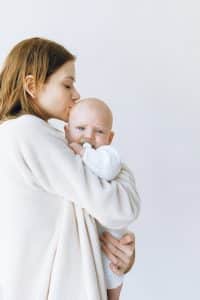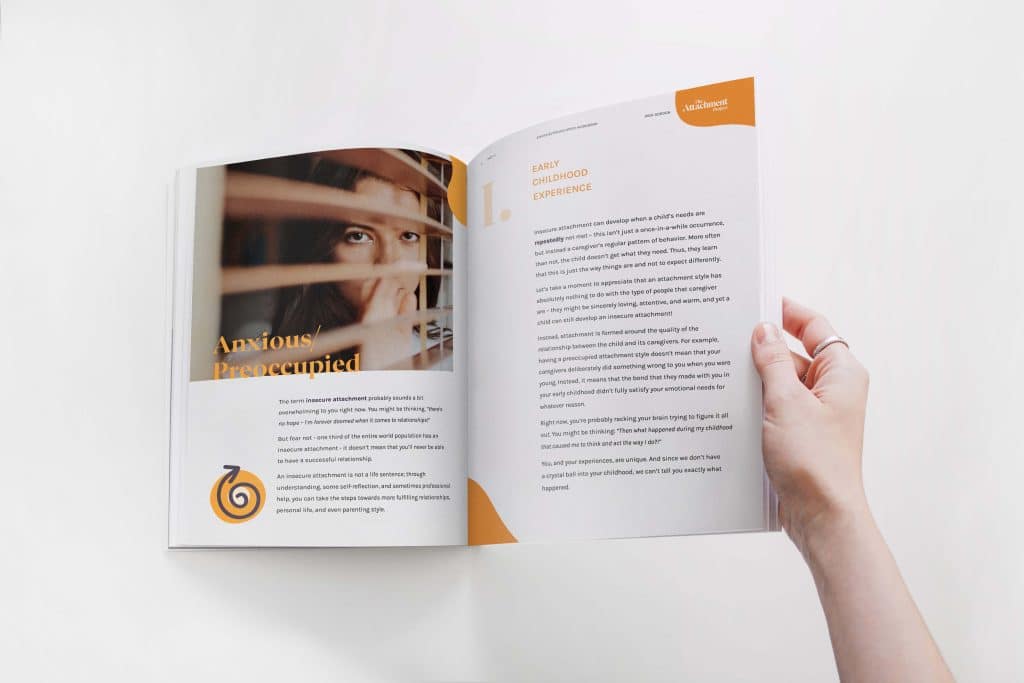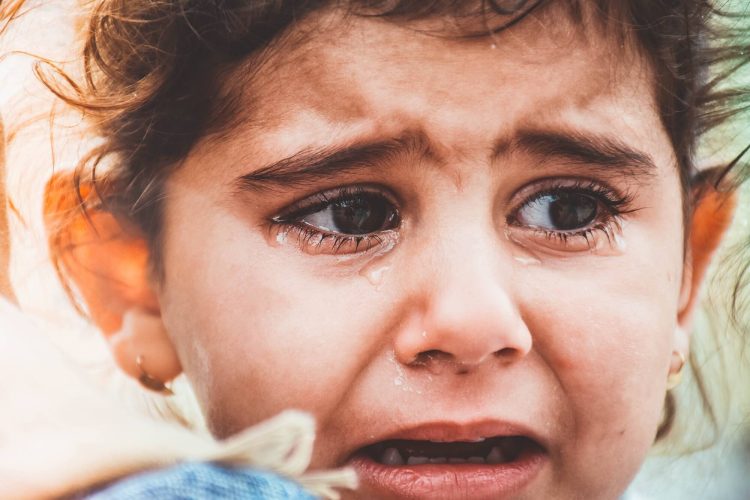Attachment Styles & Their Role in Relationships

Published on July 2, 2020 Updated on July 29, 2023
Attachment styles and the roles they play in relationships is a wide spread topic of interest, both in research and in peoples’ personal drives to understand their patterns of thoughts and behaviors. This level of interest is entirely understandable as the different attachment styles in relationships can impact interpersonal interactions in unique ways.
Attachment types develop early in life and often remain stable over time. However, this does not mean that they cannot be changed into more secure forms of attachment–it just means that you may need to develop self-awareness through understanding and resolving attachment issues. The first step of this process is to learn how insecure attachment develops and influences thoughts and actions within the important relationships in our lives.
How Insecure Attachment Creates Negative Patterns in Relationships
Have you wondered why you keep ending up in the same maladaptive relationship situations, even with different partners? Perhaps jealousy and clinginess are frequent behaviors for you, or maybe you’re prone to withdrawing from a relationship once it becomes too emotionally intimate?
If you have noticed a pattern of negative and emotionally challenging behaviors in your love life, you might benefit from digging deep and exploring the way you attach to people in intimate relationships. Understanding what attachment styles are and the basics of attachment theory is an important factor in this process.
Do you know your attachment style?
Take our attachment quiz and find out now – fast, easy, free.
What Are Attachment Styles and How Do They Affect Our Relationships?
According to psychiatrist and psychoanalyst John Bowlby, one’s bond with their primary caregivers during childhood has an overarching influence on their future social and intimate relationships–and even their relationships at work. In other words, this early bond creates a template or rules for how you build and interpret relationships as an adult.
Bowlby’s work on attachment theory dates back to the 1950s and continues to evolve due to the continuous research based on the subject. Based on attachment theory, 4 attachment styles were identified.

The four attachment styles
- Anxious (also referred to as Preoccupied)
- Avoidant (also referred to as Dismissive)
- Disorganized (also referred to as Fearful-Avoidant)
- Secure
From an evolutionary perspective, cultivating strong relationships and maintaining them has both survival and reproductive advantages. For this reason, Bowlby’s work focused on the human desire to seek contact, love, support, and comfort in others–the innate “need to belong” and how it is one of the main driving forces behind individuals’ actions.
Yet, despite our need to belong, love and relationships are rarely as perfect and problem-free as we would like them to be, and many interpersonal problems can be traced back to the issues associated with our types of attachment styles.
Before getting into the defining characteristics of the four attachment styles, it might be useful to understand how attachment types develop in children.
How Attachment types Develop in Childhood
In essence, how a primary caregiver (usually parents) acts towards and meets their child’s needs forms the foundations for how the child perceives and acts within close relationships.
The reason for this is that a child is dependent on their caregivers and seeks comfort, soothing, and support from them. If these caregivers offer a warm and caring environment, and are attuned to the child’s physical and emotional needs–even when these needs are not clearly expressed–the child becomes securely attached.
On the other hand, misattunement on behalf of caregivers towards their child’s physical and emotional needs is likely to lead to insecure attachment. It may be worth noting that caregiver misattunement may not be intentional, but the child still perceives them as not meeting their needs.
Which attachment style do you have? Take our free quiz now to find out!
Each of the 4 attachment styles has its own typical traits and characteristics. Yet, a person may not necessarily 100% fit into a single category; attachment is a spectrum and you may not match “the profile” of a specific style exactly.
However, the aim of self-awareness is to identify unhealthy behaviors and understand what you might need to work on in order to improve your love life–which understanding traits of each attachment type and how they develop can facilitate.
How does each of the four attachment types manifest in adults?

1. Anxious / Preoccupied
Adults with an anxious attachment style tend to have a negative self-view, but a positive view of others. This means that they may view their partner as their literal “better half.” Because someone with this attachment style deems themselves to be less worthy of love in comparison to other people, the thought of living without their partner (or being alone in general) causes high levels of anxiety. In other words, they deeply fear abandonment.
To ease this fear of abandonment, people with the anxious attachment style strongly desire security within relationships, and attention, care, and responsiveness from a partner tends to be the “remedy” for their feelings of anxiety.
On the other hand, the perceived absence of support and intimacy can lead someone with the anxious attachment style to become more clinging and demanding, preoccupied with the relationship, and desperate for reassurance that they are loved.
In a nutshell, people with this attachment style value their relationships highly, but are often hypervigilant towards threats to their security, as well as anxious and worried that their loved one is not as invested in the relationship as they are.
Want to know more about anxious attachment? Explore this attachment style by topic:
- Anxious Attachment in relationships guide
- Anxious Ambivalent Attachment (how anxious attachment develops in childhood)
- Self-regulation tips for anxious attachment (know your triggers and how to manage them)
- Attachment in the workplace
- The superpowers of adults with anxious attachment

2. Avoidant / Dismissive
People with the avoidant/dismissive attachment style tend to have a positive self-view and negative one of others. Consequently, they prefer to foster a high sense of independence and self-sufficiency–especially on an emotional level.
Someone with the avoidant attachment style tends to believe that they don’t have to be in a relationship to feel complete: They do not want to depend on others, have others depend on them, or seek support and approval in social bonds.
Adults with this attachment style generally avoid intimacy or emotional closeness, so may withdraw from a relationship if they feel like the other person is becoming reliant on them in this manner. They also tend to hide or suppress their feelings when faced with a potentially emotion-dense situation, such as conflict.
Want to know more about avoidant attachment? Explore this attachment style by topic:
- Self-regulation tips for avoidant attachment (know your triggers and how to manage them)
- Avoidant attachment and dating
- Avoidant attachment style and relationships
- The superpowers of adults with avoidant attachment

3. Disorganized / Fearful-Avoidant
People with the disorganized attachment style tend to vacillate between the traits of both anxious and avoidant attachment depending on their mood and circumstances. For this reason, someone with this attachment style tends to show confusing and ambiguous behaviors in their social bonds.
For adults with disorganized attachment, the partner and the relationship themselves are often the source of both desire and fear. On the one hand, fearful-avoidant people do want intimacy and closeness, but on the other hand, experience troubles trusting and depending on others.
People with this attachment style often struggle with identifying and regulating their emotions and tend to avoid strong emotional attachment due to their intense fear of getting hurt.
Want to know more about disorganized attachment? Explore this attachment style by topic:
- Fearful-Avoidant Attachment (how disorganized attachment develops in childhood)
- Self-regulation tips for adults with disorganized attachment
- Attachment in the bedroom
- Attachment in the workplace
- The superpowers of disorganized attachment
4. Secure Attachment
The three attachment styles covered so far (anxious, avoidant, and disorganized) are insecure attachment styles, so they are characterized by difficulties with cultivating and maintaining healthy relationships.

In contrast, the secure attachment style implies that a person is comfortable expressing emotions openly. Therefore, adults with a secure attachment style can depend on their partners and, in turn, let their partners rely on them.
Relationships with someone with a secure attachment style are based on honesty, tolerance, and emotional closeness. Although someone with this attachment style often thrives in their relationships, they also don’t fear being on their own. Secure attachers tend to have a positive view of themselves and others, so they do not overly seek external approval or validation–they can successfully identify and regulate their emotions, and even help a partner do so with theirs.
Want to know more about secure attachment? Explore this attachment style by topic:
- Secure Attachment in childhood (the five conditions required)
- Attachment in the bedroom
- Attachment in the workplace
Where do you stand?
Now that you are acquainted with the four adult attachment styles, you probably have an idea of which one your actions and beliefs lean towards.
Although it is completely normal to recognize features of one or more types of attachment in your history of romantic relationships, it’s important to remember that attachment types can change with major life events, or even with different partners.
For example, an insecurely attached individual could form a secure bond when they have a securely attached partner. On the other hand, it’s also possible for someone with a secure attachment style to develop unhealthy relationship behaviors after experiencing trauma or losing a loved one. So, many people do not “fit” completely into one specific profile.

When to Worry About Your Attachment Style?
Chances are that many of us don’t fully identify with the traits of secure attachment. Even if we think we have stable relationships, there might be patterns in our behavior that keep bothering us or making us stressed or unhappy. Unfortunately, some of us will recognize ourselves in the traits of one of the three insecure attachment types.
If you identify with one of the insecure attachment styles in relationships, it is highly recommended that you actively address the issue through increasing self-awareness, working on self-development, and if necessary, seeking psychological help. If left unaddressed, strongly expressed insecure and unstable attachment types can cause anxiety, depression, and other mental health issues.
Here’s the thing: Struggling is simply not necessary, as there are many ways to heal and recover from attachment disturbances.

Are you:
- Tired of struggling in relationship after relationship?
- Clingy or needy towards a partner?
- Struggling to regulate negative emotions?
- Shut down to expressions of intimacy and affection?
- Feeling unworthy of love and attention?
- Fed up with anxiety over whether your partner loves you in return?
Ready to learn how to tolerate emotional intimacy and start trusting and relying on people?
Working with a therapist on patterns of insecure behaviors would potentially be the most beneficial way to earn secure attachment. However, many people are not able to avail of one-to-one services due to financial, time, or personal constraints. For this reason, we developed Attachment Styles Workbooks and an Emotions & Self Growth Guide to help you overcome attachment insecurity.
Attachment security doesn’t have to be a distant dream or unachieveable wish: You can achieve a secure attachment style through psychoeducation, self-awareness, and self-growth. We at The Attachment Project are here to support you on this journey.
If you prefer to go the route of a workbook, we recently released our first series of attachment style digital workbooks.

Attachment Style Digital Workbooks
If you’d like to use attachment theory to build better and more secure relationships with everyone around you, our workbooks are the perfect place to start!
Empower Your Instagram Feed
Want to learn more about attachment theory? We’re here to help you make sense of your attachment style in various contexts of your life. Follow The Attachment Project on Instagram.
Sources:
Baumeister, R. F., & Leary, M. R. (1995). The need to belong: Desire for interpersonal attachments as a fundamental human motivation. Psychological Bulletin, 117(3), 497-529.
Mikulincer, M., Shaver, P.R. (2007). Attachment in Adulthood: Structure, Dynamics, and Change. Guilford Press.











 Get mental health tips straight to your inbox
Get mental health tips straight to your inbox








